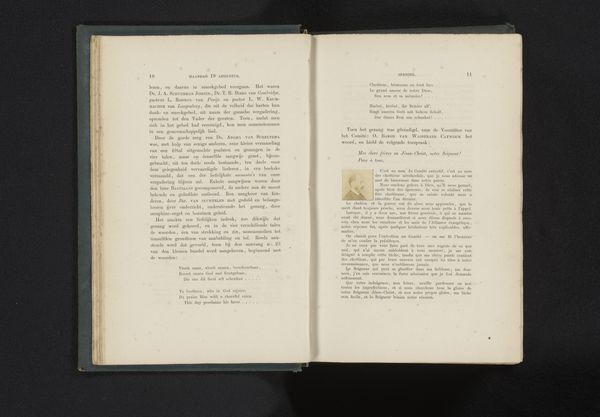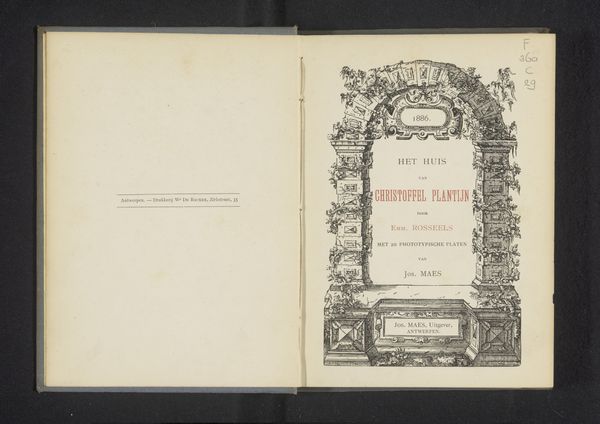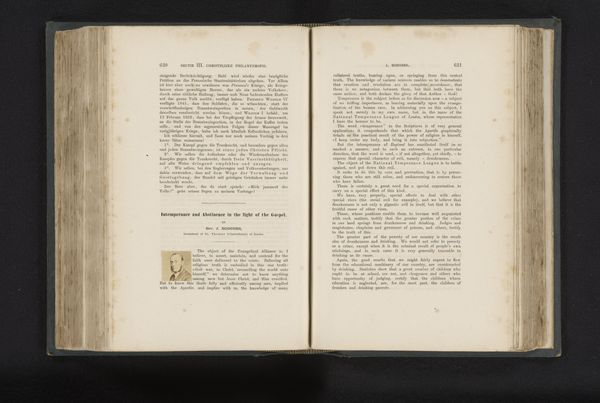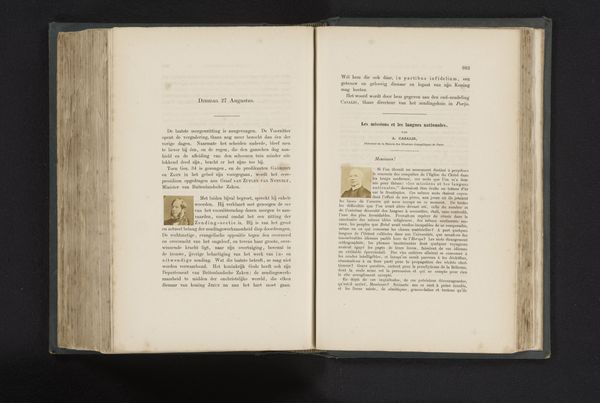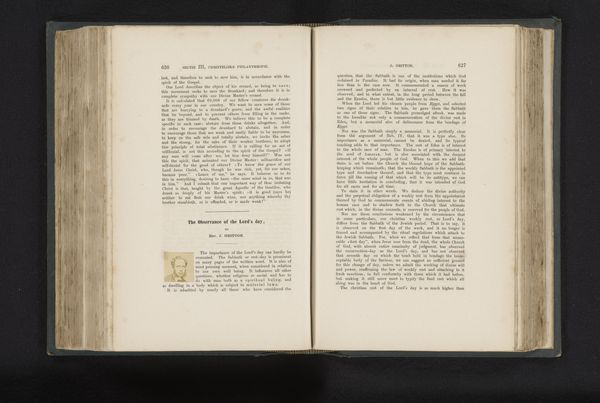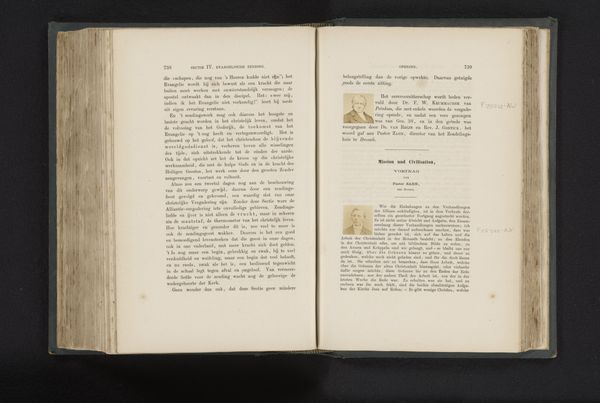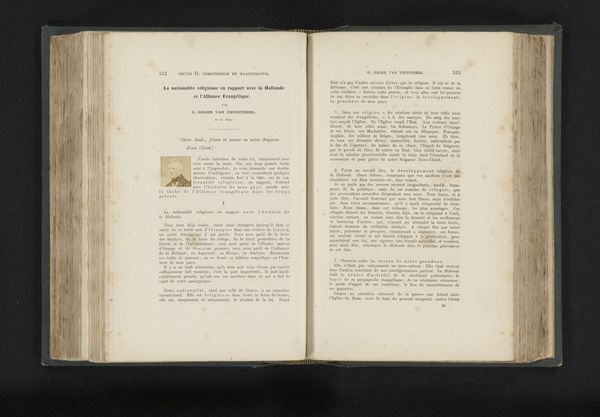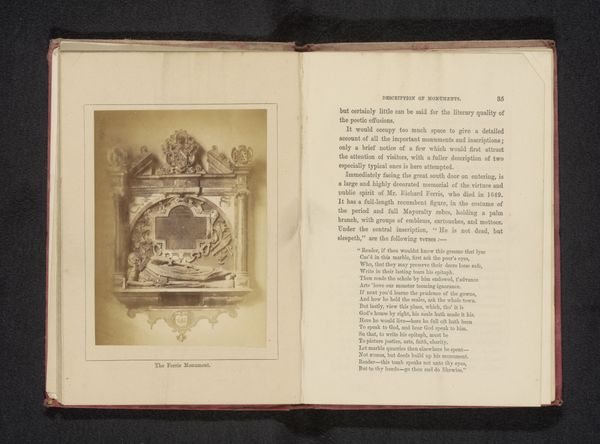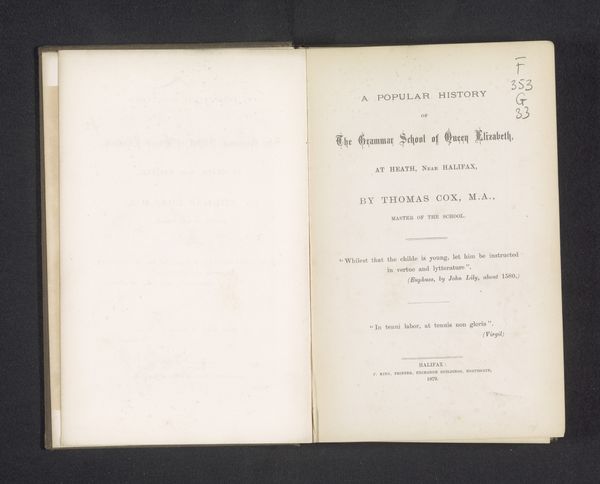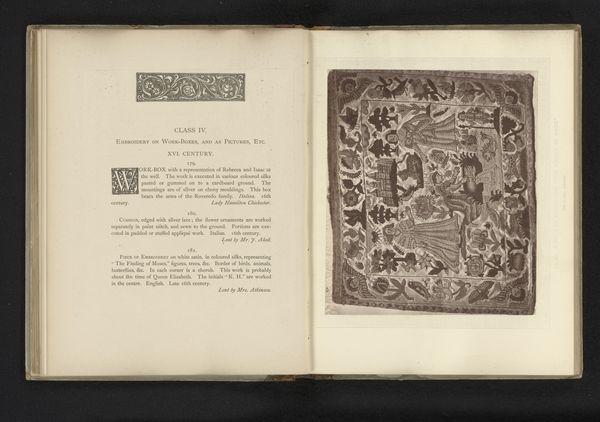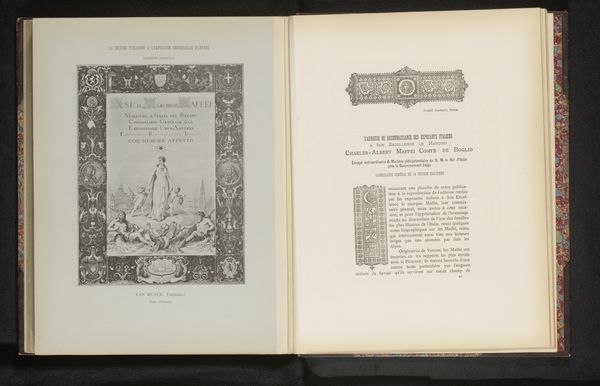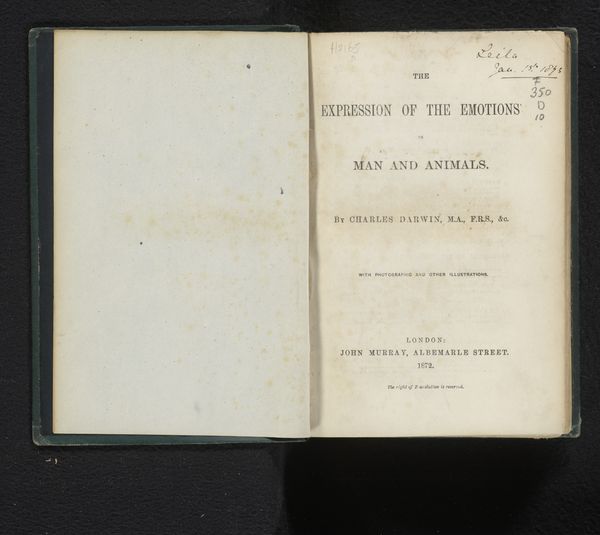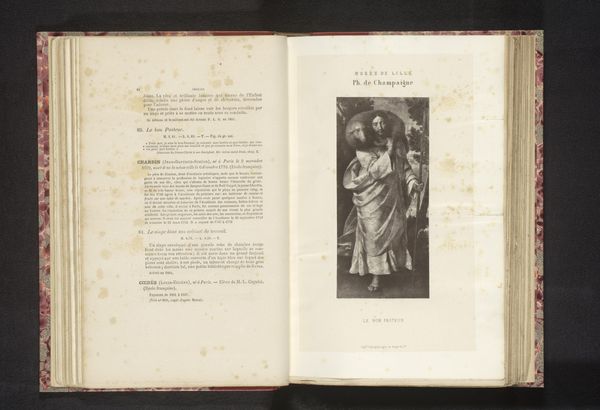
Dimensions: height 225 mm, width 161 mm, thickness 35 mm
Copyright: Rijks Museum: Open Domain
This is the title page of Washington Irving’s Chronicle of the Conquest of Granada. Note the frame, an ornamental motif enclosing the title. This decorative border, reminiscent of Moorish architecture, evokes the very culture Irving chronicles. It's a non-verbal language that connects us to the past, charged with cultural memory. Similar patterns can be traced back to ancient Islamic art, adorning mosques and palaces from Spain to Persia. These recurring forms suggest a collective memory, a visual echo resonating through centuries. Consider how the arabesque, with its infinite, flowing lines, embodies a sense of timelessness and spiritual continuity. Its rhythmic repetition speaks to our subconscious desire for order and harmony, a visual mantra passed down through generations. Such symbols possess an extraordinary power, engaging viewers on a primal, subconscious level. The cyclical nature of the symbol resurfaces and evolves, taking on new meanings with time.
Comments
No comments
Be the first to comment and join the conversation on the ultimate creative platform.
